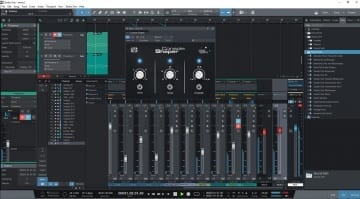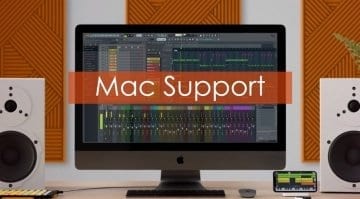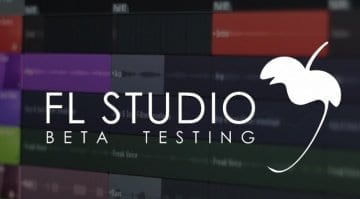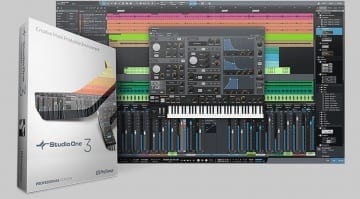PreSonus get all excited about version 3.2 of Studio One
Stealing hearts from many other DAWs Studio One has positioned itself as the wannabe standard for computer-based audio recording. Version 3 is certainly it’s most competent attempt yet but perhaps it still remains more like the best alternative to Pro Tools or Cubase rather than everyone’s first choice. However, it keeps evolving and version 3.2 was, they feel, awesome enough to break out the very excitable PreSonus marketing machine.
First up we have the new Mix Engine FX. This is about allowing you to craft your own sound by taking their transparent 64-bit audio engine and running it through an old vintage console. The Mix Engine FX currently consists of a single Console Shaper plug-in that has three knobs – Drive, Noise and Crosstalk and it’s these somewhat gritty characteristics that you can distort, fatten or mess you mix about with. It doesn’t sit as an insert, instead it’s added to a bus or the main output to work on the group of tracks routed to that destination. It processes at the source and the summing point and so is actually doing something quite clever. This is particularly obvious with the crosstalk as other tracks start to bleed over each other – I did find however that it also brought in previously muted tracks that I didn’t want to hear so make sure unwanted material is well out of the way. The result is a warm, colourful flavour that quickly distorts if pushed too far but certainly adds something I’ve not really seen before, which is nice.
Next we have VCA faders which is essentially a group or bus fader that gives you level control over a group of tracks, but rather than altering the mixed output it controls the individual faders of each track in the group and keeps them relative to each other. They also don’t have to be a group or routed to the same destination, simply select the channels in the console, right-click and select “VCA Fader” and you’re off. Typically you would use it on a vocal group or all the mics on a drum kit – that kind of thing.
And finally we have some workflow enhancements. Studio One was already imitating some of the behaviour of the Smart Tool in Pro Tools but now it’s fully embraced the idea. I’m slightly confused over the implementation but what we have is a new button on the toolbar labelled “Range” to the left of the Arrow tool which when selected also selects the Arrow tool and the other Range tool. What this does is when you put the cursor on a clip it’s the Arrow tool for the bottom half and becomes the Range tool for the top half enabling you to use both tools very quickly and easily. The Range tool also now allows you to split by double clicking which is great but means that if you want to open and edit the clip you need to make sure you double click in the bottom half. Another very in-vogue feature is MIDI to audio conversion and PreSonus have implemented this by letting your drag a MIDI clip or region (that’s using a virtual instrument) onto an audio track and it automatically creates an audio version. There’s a bundle of other bits and pieces with some new zoom commands and shortcuts. What hasn’t been tackled is the clumsiness of the multi-touch editing. Touch is still great in the console but slow and frustrating in the arrange page and editor. Hopefully it will see some development in a later version.
Studio One version 3.2 is free to existing users and available now to download directly within the DAW.
More information: http://studioone.presonus.com/whats-new










